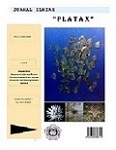Marine Debris Composition on Tasik Ria Beach, Tombariri, Minahasa Regency
DOI:
https://doi.org/10.35800/jip.7.1.2019.23411Abstract
Indonesia is referred to as the second largest contributor of marine plastic waste in the world after China, with an estimated 0.48-1.29 million metric tons per year (Jambeck et al, 2015). The main problem today is the lack of information about pollution of marine debris on the coast, especially in North Sulawesi. This study aims to identify the type of marine debris on Tasik Ria Beach using the transect line observation method. Observation of marine debris was carried out 5 times with a total of 10 transects between February and April 2019. Data analysis was carried out using several software namely Microsoft Excel, Statgraphics, and JMP. The analysis technique used is EDA (Exploratory Data Analysis) with GDA (Graphical Data Analysis) as the main approach. Of the various types of debris obtained, plastic debris is the most commonly found, as many as 189 items, followed by glass 97 items, wood and derivatives of 11 items, rubber 5 items and clothes 2 items. Based on the results of the study, the type of macro debris is the most common category of debris at the study site. The total number of macro-debris collected in ten observation transects was 316 items with a total weight of 118.62 gr/m2, while meso-debris had only 6 items with a total weight of 7.18 gr/m2. The percentage of macro-debris composition found on Tasik Ria beach is plastic (58.15%), glass (29.85%), metal (6.52%), wood and derivatives (3.42%), rubber (1, 55%) and clothes (0.62%). These results can illustrate the potential for events where plastic is the dominant component of marine debris on the coast, specifically in the District of Tombariri, Minahasa Regency.
Keywords: Marine debris, Macro-debris, Category, Composition, Tasik Ria
Â
ABSTRAK
Indonesia disebut sebagai kontributor sampah plastik ke laut terbesar kedua di dunia setelah Tiongkok, dengan estimasi 0,48-1,29 juta metrik ton per tahun (Jambeck et al, 2015). Masalah utama dewasa ini adalah kurangnya informasi mengenai pencemaran sampah laut di pantai, khususnya di Sulawesi Utara. Penelitian ini bertujuan untuk mengidentifikasi jenis sampah laut di Pantai Tasik Ria dengan menggunakan metode pengamatan garis transek. Pengamatan sampah laut dilakukan sebanyak 5 kali dengan total 10 transek antara bulan Februari hingga April 2019. Analisis data dilakukan dengan menggunakan perangkat lunak yaitu Microsoft Excel, Statgraphics, dan JMP. Adapun tehnik analisis yang digunakan adalah EDA (Exploratory Data Analysis) dengan pendekatan utama yaitu, GDA (Graphical Data Analysis). Dari berbagai semua jenis sampah yang didapatkan, sampah plastik merupakan yang paling banyak ditemukan yaitu sebanyak 189 item, diikuti kaca 97 item, kayu dan turunannya 11 item, karet 5 item dan terakhir pakaian 2 item. Berdasarkan hasil penelitian, jenis sampah makro merupakan ukuran sampah yang paling banyak ditemukan di lokasi penelitian. Jumlah total makro-debris yang dikumpulkan di sepuluh transek pengamatan adalah sebanyak 316 item dengan bobot total 118,62 gr/m2, sedangkan meso-debris hanya terdapat 6 item dengan bobot total 7,18 gr/m2. Persentase komposisi makro-debris yang terdapat di pantai Tasik Ria adalah plastik (58,15%), kaca (29,85%), logam (6,52%), kayu dan turunannya (3,42%), karet (1,55%) dan pakaian (0,62%). Hasil ini dapat menggambarkan potensi kejadian dimana plastik menjadi komponen sampah laut dominan di pantai, secara khusus di Kecamatan Tombariri, Kabupaten Minahasa.
Kata kunci: Sampah laut, Makro-debris, Jenis, Komposisi, Tasik-RiaDownloads
Published
How to Cite
Issue
Section
License
COPYRIGHT
Authors who publish with this journal agree to the following terms:
Authors hold their copyright and grant this journal the privilege of first publication, with the work simultaneously licensed under a Creative Commons Attribution License that permits others to impart the work with an acknowledgment of the work's origin and initial publication by this journal.
Authors can enter into separate or additional contractual arrangements for the non-exclusive distribution of the journal's published version of the work (for example, post it to an institutional repository or publish it in a book), with an acknowledgment of its underlying publication in this journal.
Authors are permitted and encouraged to post their work online (for example, in institutional repositories or on their website) as it can lead to productive exchanges, as well as earlier and greater citation of the published work (See The Effect of Open Access).




















